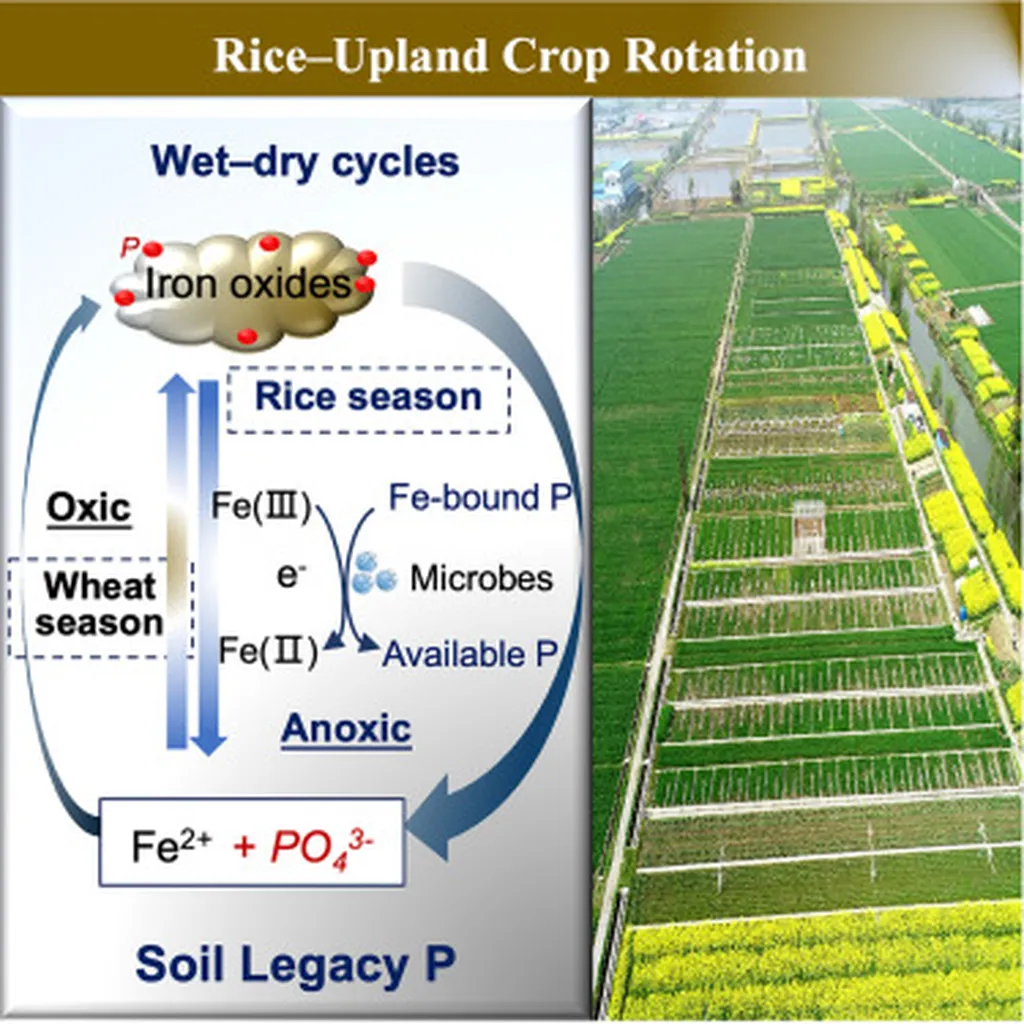In the heart of China’s agricultural landscape, a groundbreaking study led by Dr. Hao Chen from the State Key Laboratory of Soil and Sustainable Agriculture is reshaping our understanding of phosphorus (P) management in paddy soils. The research, published in the journal *Resources, Environment and Sustainability* (translated as *资源·环境·可持续性*), is shedding light on the intricate dance between iron (Fe), organic carbon (OC), and phosphorus, offering promising avenues for sustainable agriculture and potentially impacting the energy sector.
For over two decades, Dr. Chen and his team have been conducting in-situ field experiments, coupled with 60-day anaerobic incubation studies, to unravel the complex interactions that control phosphorus transformation and release in manure-enriched paddy soils. Their findings challenge conventional wisdom and open new pathways for optimizing phosphorus use in agriculture.
“Our study reveals that prolonged manure fertilizer inputs lead to a decoupling of iron dissolution and inorganic phosphorus release,” explains Dr. Chen. This decoupling is a critical discovery, as it highlights the unique role of organic carbon in regulating phosphorus dynamics. Under anaerobic conditions, both chemical and manure fertilizers increased phosphorus concentrations, but through distinct mechanisms.
In chemical fertilizer treatments, the increased phosphorus primarily came from the release of iron-bound inorganic phosphorus (Fe-Pi). However, in pig manure treatments, the transformation of iron from crystalline to amorphous forms led to an 18.8% loss of iron-bound organic carbon. This, in turn, caused a dramatic decrease in iron-bound organic phosphorus (Fe-Po) and a sharp increase in labile phosphorus, which is more readily available for plant uptake.
The implications of this research are profound. By understanding the pivotal role of iron-organic carbon interactions, farmers and agronomists can develop more effective strategies for phosphorus management. This could lead to reduced phosphorus loss, improved fertilizer efficiency, and enhanced crop yields, all of which are crucial for sustainable agriculture.
Moreover, the findings have potential ramifications for the energy sector. Phosphorus is a critical nutrient not only for agriculture but also for bioenergy production. Optimizing phosphorus use in agricultural systems can contribute to the sustainable production of bioenergy crops, reducing the reliance on fossil fuels and promoting a greener energy future.
Dr. Chen’s research underscores the importance of interdisciplinary approaches in addressing global challenges. By bridging the gap between soil science, agronomy, and energy research, we can pave the way for innovative solutions that benefit both the environment and the economy.
As we strive for a more sustainable future, the insights gained from this study will undoubtedly shape the development of new agricultural practices and technologies. By harnessing the power of iron-organic carbon interactions, we can unlock the full potential of phosphorus in supporting sustainable agriculture and a cleaner energy landscape.
In the words of Dr. Chen, “This research is just the beginning. There is still much to explore, but the potential is immense.” With continued investment and collaboration, the vision of a sustainable and resilient agricultural system is within reach.

